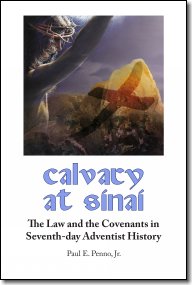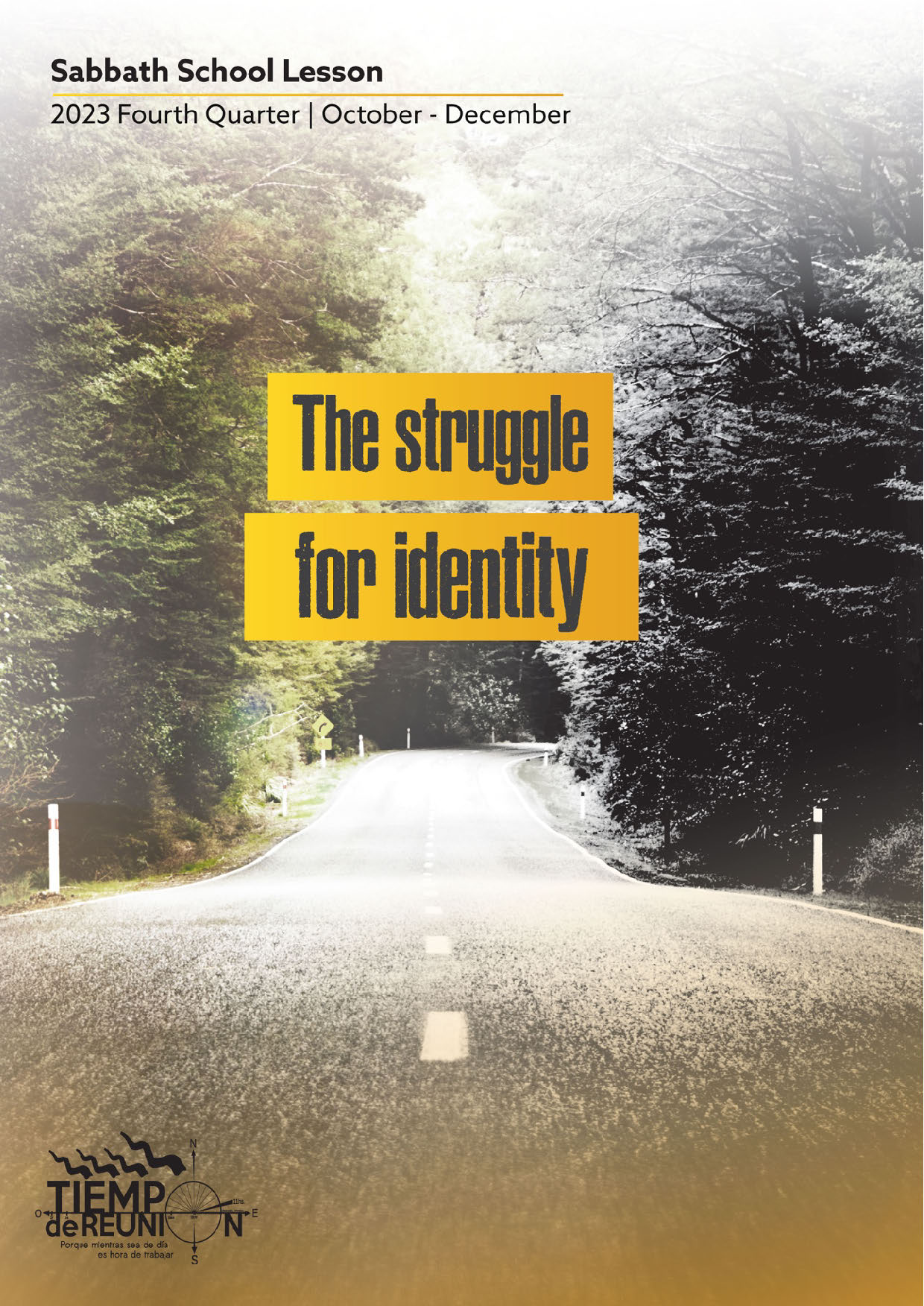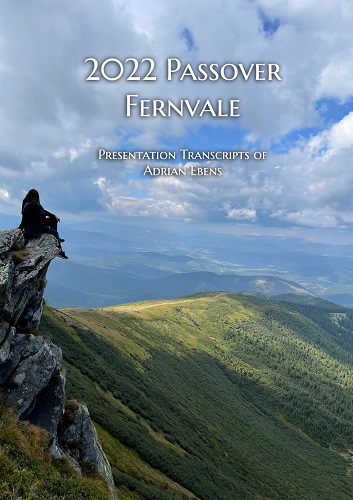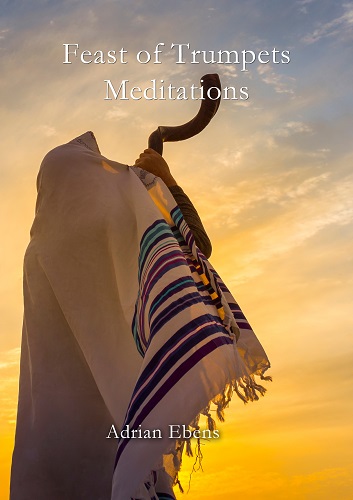"Married To Another": Examples 2, 3 and 4 Contrasting the Two Covenants
Example 2
And the eyes of them [Adam and Eve] both were opened, and they knew that they were naked; and they sewed fig leaves together, and made themselves aprons – Gen 3:7 (An Old Covenant characteristic) . . . . . . Unto Adam also and to his wife did the LORD God make coats of skins, and clothed them Gen 3:21 (A New Covenant provisional characteristic.)
Adam and Eve: (Self-Righteousness Versus God’s Righteousness). After Adam and Eve fell into sin, the characteristics of distrust, fear, shame, guilt, blame, self-justification, disconnection and distancing themselves from God took the place of love (Gen 3:8-13). They lost their covenantal garments of light (signifying their character of purity and innocence) and felt naked and exposed. So they sowed fig leaves together for clothes yet this was an attempt to cover “the shame of their nakedness” (Gen 3:7). This was the result of their own devising and the first example in Scripture of a manifestation of “works” – our first parent’s unsuccessful natural unaided attempt to try and cover their moral problems and deal with their shame. This reflects and illustrates the Old Covenant experience. Only God could remedy the problem. He provided a blood sacrifice for lambskins to cover them.
Life Application: The provisional sacrifice is a gift of God’s free grace. It prefigured the sacrifice (freely given life) of Christ, as “the lamb slain from the foundation of the world”, who covers the shame of our moral nakedness with His spotless righteousness (Rev 3:17,18; 13:8.). God also promised to put gospel “enmity”, a heaven-born hatred against sin, in the hearts of Adam, Eve and their seed (Gen. 3:15). Gospel enmity characterized by an aversion toward sin (disconnection/lawlessness) is another indication of the new birth testifying of a New Covenant experience.
Example 3
By faith [firm trust/belief] Abel offered unto God a more excellent sacrifice than Cain, by which he obtained witness that he was righteous, God testifying of his gifts: and by it he being dead yet speaketh. – Heb. 11:4
Cain and Able: The New and Old Covenant experience was further demonstrated in the world’s first parent’s children - Cain and Able. They both professed to serve the living God. When God required a sacrifice, Cain brought an bloodless offering from the fruit of the ground produced by his own works – indicating unbelief. This act of Cain points to an Old Covenant experience. Cain’s offering revealed a heart of unbelief (to do religion his way) and God “had no respect for it” (Gen 4:5). Able on the other hand brought a living sacrifice prefiguring Christ the life-giver. This demonstrated faith in the Messiah to come and was acceptable to God (Gen 4:4).
Life Application: When we were “born of the flesh” (our first birth) we all naturally inherited an inflexible “law of sin” nature (Rom 8:23,25; 8:2). Unaided by God’s Spirit or grace, we soon very naturally and easily develop a moral nature/character that has a tendency toward self-justification that tries to obtain righteousness and approval by our own worldly or religious performance. This is amazingly subtle. (Any of you parents may from time-to-time notice this in your kids). This natural tendency is so enmeshed into our nature that, without the illumination of God’s Word in exposing our moral defects we find it very hard to recognize and usually do not want to acknowledge this! We find it difficult to admit the reality of our bent to sinfulness. I regularly encounter wonderful people from wide differing socioeconomic backgrounds influenced by “New Age” mentality. These often times sophisticated and educated people appear to highly prize and value love, peace, healthy living, spirituality etc. They are often high achievers and that in it self is not always a bad thing for Christians either. (It is good to faithfully develop our God-given gifts and talents. Matt 25:14-30). So although these people may have many admirable qualities, under the subtle deception of their philosophy there is usually either a lack of knowledge of, a complete denial of, or a reluctance to want to acknowledge the inherent sinfulness of human nature. They believe in the “inner light” and the humanistic philosophy that humanity can naturally develop the good inside themselves (find enlightenment like in Buddhism etc.) but they do not recognize in and of ourselves, without divine supernatural converting power, “there is none righteous no not one”. (See Jer. 17:9; Rev 3:15-18; John 3:6, 9:41; 1 Cor. 15:50; Jer. 13:23; Isa 64:6; Mark 7:21,22; Rom 3:10).
God has always desired that His people would, at least eventually, experience the New Covenant and learn from the hopelessness of the Old. Fortunately, oftentimes when people get tired of the old, fed up with either a life of sin and guilt, or, the emptiness and futility of attempting to obtain righteousness by personal religious achievements, they are moved to the foot of the cross to seek liberation in the New.
_________________________________________________________
Example 4
Abraham’s Family Correlating with Mount Sinai: “Example 4” here blends into “Example 5”. The apostle Paul connects the experience of Abraham and his two sons with Moses and the children of Israel at Mount Sinai. In writing to the Jewish Christians in the church of Galatia that were saturated with legalism (people who desired to be “under the law”), Paul used another illustration in describing the two Covenants. He compares the Covenants to a famous yet somewhat dysfunctional family, a family where the mother and father made some big self-dependent mistakes. However, fortunately, they eventually got it right! It was a family where God first established His Covenant - the family of Abraham. There is an important lesson to be gained here because Paul wrote something concerning Abram’s wife Sarah and Hagar her mistress we will now unpack. He wrote unequivocally, “these women ARE [signify] two Covenants” (Gal 4:24 KJV). So if there is anywhere in Scripture that we could expect would summarize the two Covenants it would be here.
Tell me, you who desire to be under law, do you not hear the law? For it is written that Abraham had two sons, one by a slave and one by a free woman. But the son of the slave was born according to the flesh, the son of the free woman through promise. Now this is an allegory: these women are two covenants. One is from Mount Sinai, bearing children for slavery; she is Hagar. Now Hagar is Mount Sinai in Arabia; she corresponds to the present Jerusalem, for she is in slavery with her children. But the Jerusalem above is free, and she is our mother. For it is written, "Rejoice, O barren one who does not bear; break forth and shout, you who are not in travail; for the children of the desolate one are many more than the children of her that is married." Now we, brethren, like Isaac, are children of promise. But as at that time he who was born according to the flesh persecuted him who was born according to the Spirit, so it is now. But what does the scripture say? "Cast out the slave and her son; for the son of the slave shall not inherit with the son of the free woman." So, brethren, we are not children of the slave but of the free woman. -Gal 4:18-28 RSV.
“These woman are the two Covenants”: You are most likely familiar with the story of Sarah and Hagar so we won’t repeat all the details. One Covenant is from Sinai and one from heaven. One corresponds to bondage and the other to freedom. One is of the flesh and the other is of the Spirit. One was based upon what Abraham, Sarah devised (with the assistance of Hagar) in their human attempt to hasten the promised child. The other was based on what God did in doing what Abraham and Sarah could not do, and that was, through divine impregnation, miraculously bringing about the child of the “promise”. Ishmael, the “son of the slave” woman, represents those under the old Covenant and Isaac, the “son of the free woman”, represents those under the New Covenant. This was AFTER they learned from their mistake and trusted solely in His promise. Now that we know what the two women epitomize, we know what characterizes the two Covenants. 1) Slavery/spiritual bondage 2) Freedom/spiritual liberty!
Life Application: Problem: All people back then, and today, “have sinned and come short of the glory of God” (Rom 3:23). Although the Old Covenant was provisional, it required continual offerings. Christ’s offering of Himself on the other hand was “once and for all”.
Solution: The “bringing in of a better hope” - the mediator of the New Covenant Heb. 7:19. The will of God is to cleanse, to take away the first (old) Covenant and establish the “second”. This includes sins that have been cultivated and cherished. The purpose of the New Covenant is for God to put/write the law of liberty on our minds and hearts through the Holy life-giving Spirit of God, (Heb. 8:10; 10:16; 2 Cor. 3:3), to empower us to walk in His laws of life and happiness, live a life of victory and ultimately deliver us from the power of death (See Matt 6:13; Rom 6:14; Heb. 2:14; Phil 4:13; 1 John 5:4.) The purpose of Christ - the central figure of the New Covenant - is to purge our conscience, to purify our minds and hearts from the guilt, shame and condemnation (Heb. 9:14.)
God’s Covenant with Abraham was founded upon blood/life sacrifice. (See Gen. 15:9,10,17). These passages speak of a “burning lamp” (fire) that passed through the pieces of that living sacrifice Abraham prepared. This fire typified the flame of God’s love and the glorious presence of Christ involved in sacrifice (See Song 8:6.) In whom we have redemption through his blood, even the forgiveness of sins – Col 1:14. “Ye are the children . . . of the covenant which God made with our fathers, saying unto Abraham, And in thy seed shall all the kindreds of the earth be blessed.” – Acts 3:25, 26
And so all Israel shall be saved: as it is written, There shall come out of Zion the deliverer, and shall turn away ungodliness from Jacob: For this is my covenant unto them, when I shall take away their sins. – Rom 11: 26, 27
Firstly, the covenant is God’s unfailing promise to us. Secondly, the metaphoric expression “Abraham’s seed” is a prophecy referring to Christ. Thirdly, through repentance the “blessing of Abraham” promises to “turn away ungodliness” from our nature and “take away their [our] sins”, to deliver us from the power of sin and the consequential guilt, shame and condemnation (Rom 8:3; John 3:17; 8:11; 1 John 3:20,21). The fourth object of the New Covenant is to give us an eternal inheritance.





